
 |
WAITING FOR THE
SHADOW
Astronomical Observing and Photography - Joseph Cali
|
| PHOTOGRAPHY | ECLIPSES | ASTRONOMY | HOME PAGE |
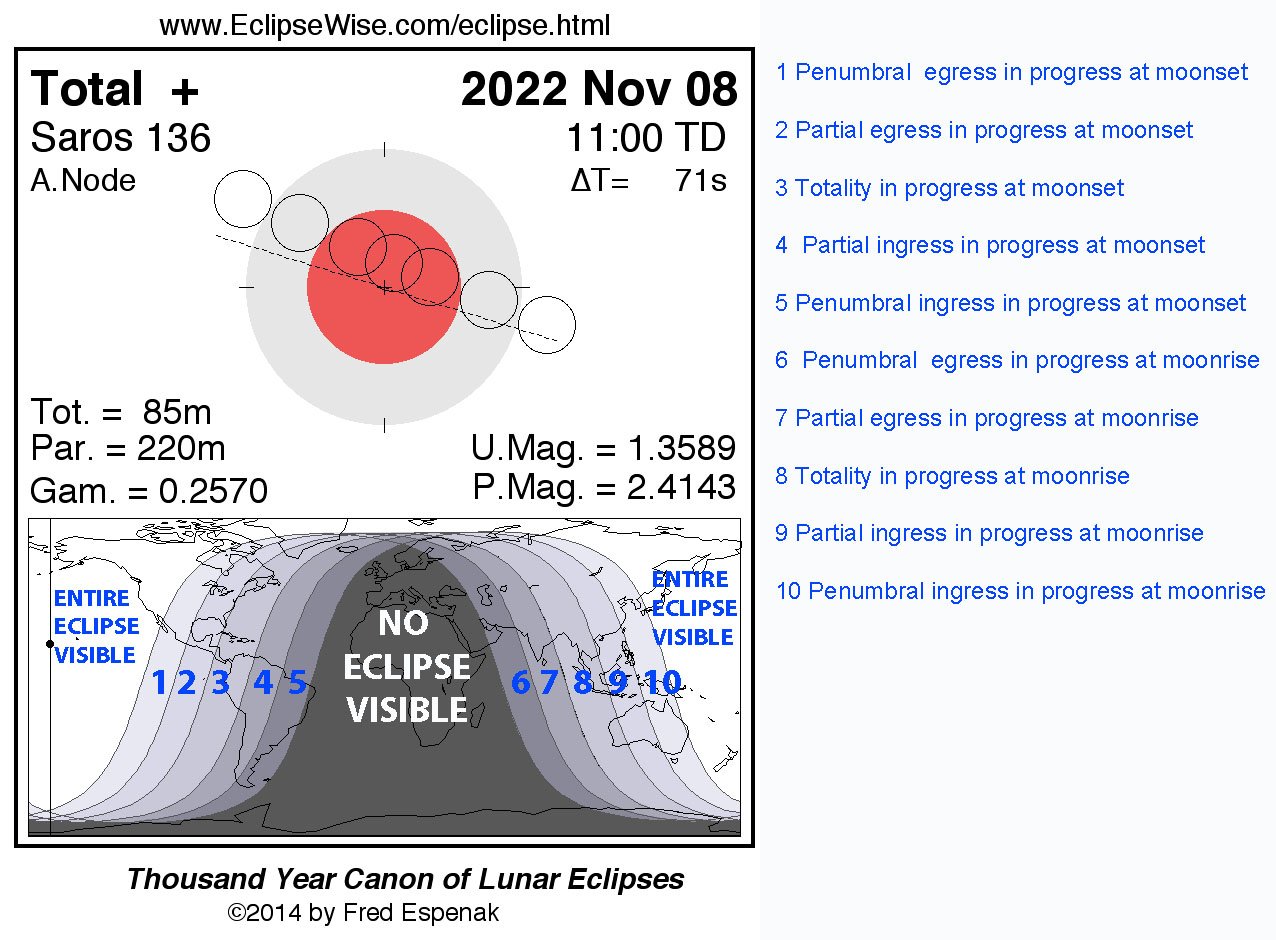
| Eclipse Event |
Time (UT) |
| Penumbral commences |
08:01:52 |
| Partial eclipse commences | 09:08:49 |
| Total eclipse commences | 10:16:12 |
| Maximum Eclipse |
10:59:11 |
| Total eclipse concludes |
11:41:52 |
| Partial eclipse concludes | 12:49:24 |
| Penumbral eclipse concludes | 13:56:32 |



 Moon at first contact
ISO 400 f5.6 1/250s |

Moon: Half immersed, exposed for sunlit side
ISO 400 f5.6 1/250s |
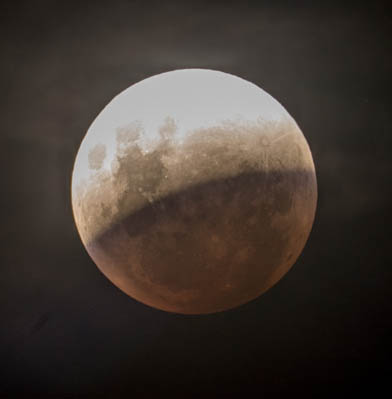
Moon: Half immersed, exposed for umbral shadow
ISO 400 f5.6 1/15s |
 Moon 3/4 immersed, exposed for sunlit side, processed for umbral shadow ISO 400 1200mm f5.6 1/30s Raw processed with shadow boost and highlight suppression |
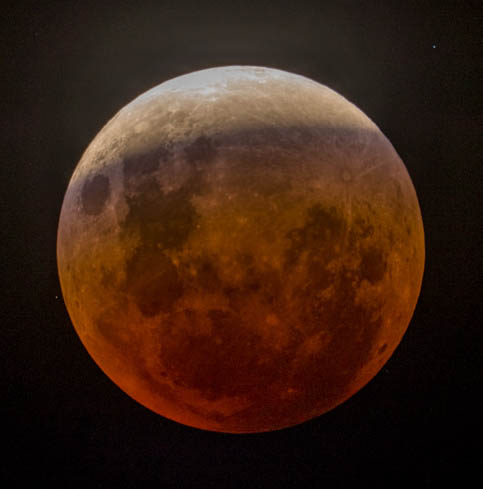 Moon 3/4 immersed, exposed for umbral shadow ISO 400 1200mm f5.6 1/6s Raw processed with shadow boost and highlight suppression for sunlit part |
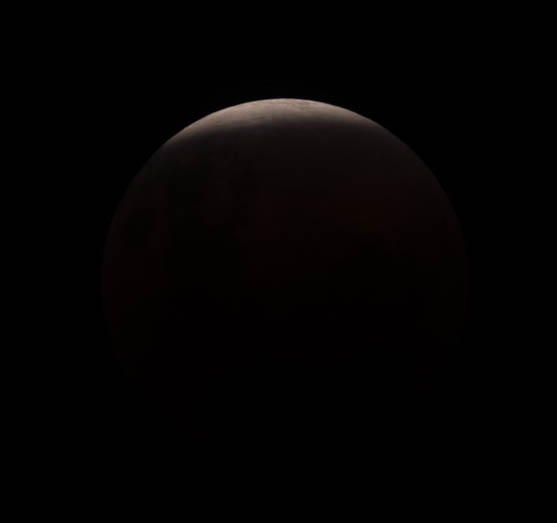 Moon 9/10 immersed, exposed for sunlit crescent ISO 400 f5.6 1/20 s |
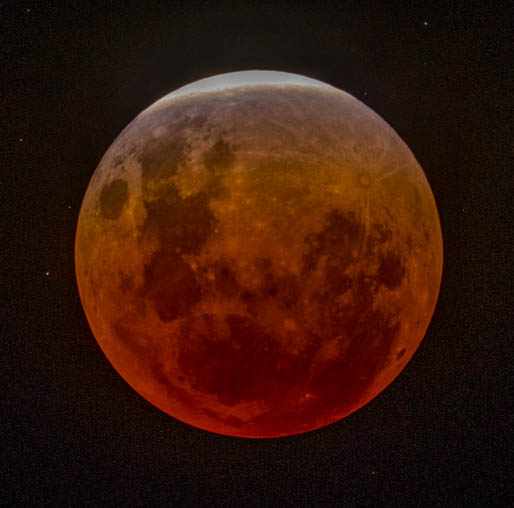 Moon 9/10 immersed, exposed for umbral shadow ISO 400 f5.6 2s Equivalent to ISO 1600 1200mm f5.6 1/2s Raw processed with shadow boost and highlight suppression |
 Moon at totality
ISO 1600 f5.6 4s Equivalent to ISO 6400 f5.6 1s Raw processed with shadow boost and highlight suppression |
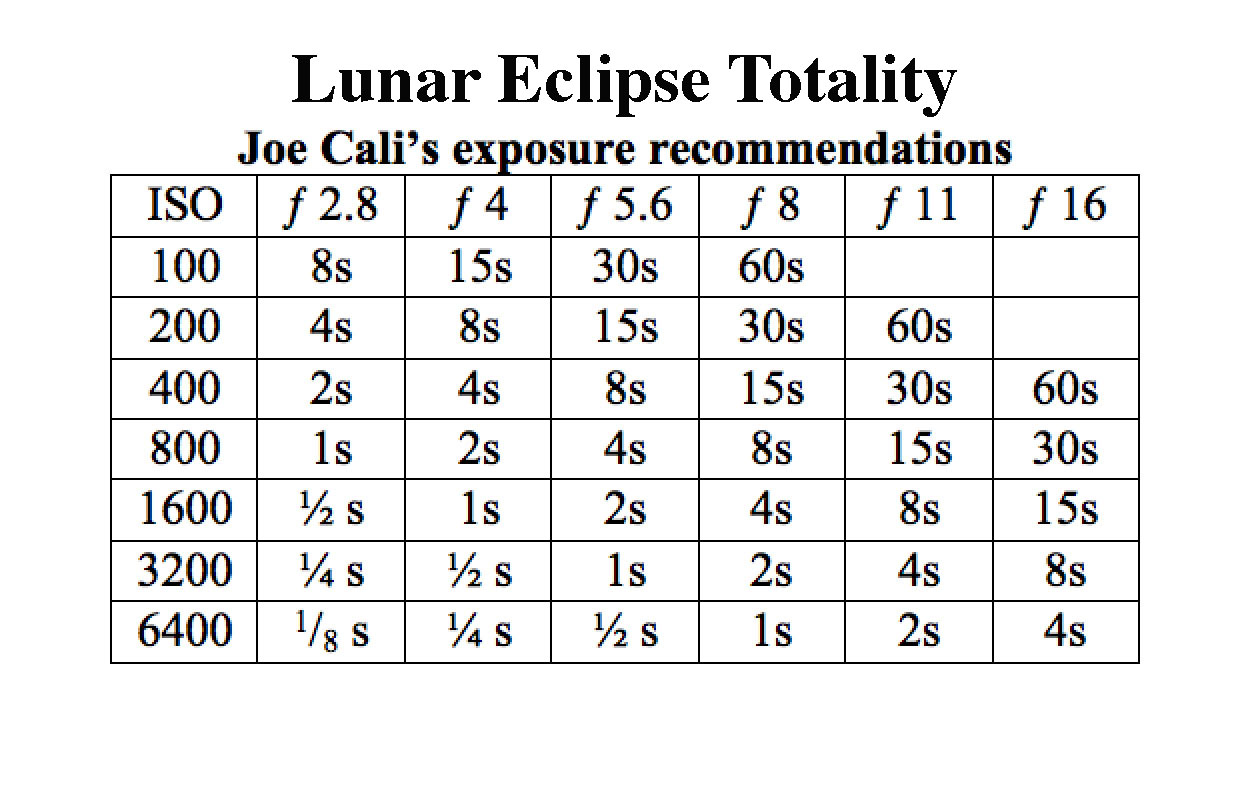
 Some
of the exposures shown above are up to 4s long. I used an 8
inch
telescope mounted on a high precision mounting to take these images. As
the Moon gets deeper and deeper into the shadow, the required
exposures get longer and longer. If the eclipse is very dark, much
longer exposures may be required. If you use a telephoto lens on
a fixed
tripod, the Moon's image will eventually begin to move during the
longer exposures and show blur.
Some
of the exposures shown above are up to 4s long. I used an 8
inch
telescope mounted on a high precision mounting to take these images. As
the Moon gets deeper and deeper into the shadow, the required
exposures get longer and longer. If the eclipse is very dark, much
longer exposures may be required. If you use a telephoto lens on
a fixed
tripod, the Moon's image will eventually begin to move during the
longer exposures and show blur. | Focal Length mm |
Max Exposure(s) No pixel blur |
Max exposure(s)
3 pixel blurSuitable for full screen laptop view |
| 12 |
5s |
14s |
| 14 |
4s |
12s |
| 16 |
3s |
10s |
| 24 |
2.5s |
7s |
| 28 |
2s |
6s |
| 35 |
1.5s |
5s |
| 50 |
1s |
3s |
| 70 |
0.7s |
2s |
| 105 |
1/2s |
1.5s |
| 135 |
1/3s |
1s |
| 200 |
1/4s |
0.7s |
| 300 |
1/6s |
1/2s |
| 400 |
1/10s |
1/3s |
| 500 |
1/10s | 1/3s |
| 600 |
1/10s | 1/3s |
| 800 |
1/15s |
1/4s |
| 1000 |
1/25s |
1/8s |
| 1200 |
1/30s |
1/10s |

